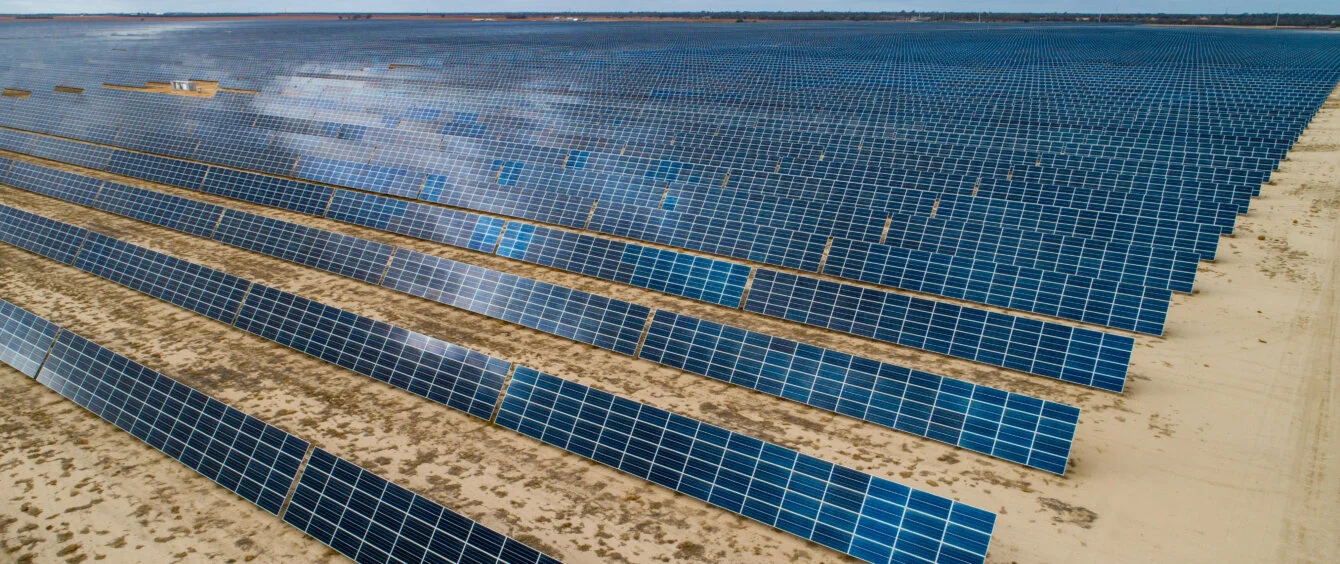A recent study by the International Energy Agency (IEA) shows that solar PV has been the biggest investment magnet as of late. Photovoltaics has been considered the lowest-cost electricity generation technique for years, in part due to its increasing efficiency driven by innovations. One such novelty is referred to as the n-type solar cell. Put simply, it is a customary cell with an inverse design, which leads to greater efficiency and longer lifetimes. Experts anticipate that this technology will soon lead the market.
On principle, the mechanism of n-type solar cells is similar to that of their traditional counterparts. They both convert sunlight to electrical energy. This happens in various layers of the silicon used as a semiconductor. The cells consist of a negatively doped n-layer, a positively doped p-layer, and a boundary layer referred to as the p-n transition.
Doping involves introducing foreign atoms into the semiconductor material to change its electrical conductivity in a controlled manner. Here, a distinction is made between p- and n-doping. N-doping entails implanting foreign atoms acting as electron donors. In other words, they release electrons. When p-doping, electron acceptors are implanted to accept the released electrons. In operation, the two layers thus react to each other.
Loss reduction thanks to phosphorous doping
The key difference between p- and n-type solar cells lies in the base material, i.e. the thicker semiconductor layer. In p-type cells, it consists of silicon, which has been positively doped with boron atoms. In n-type cells, it is made of silicon negatively doped with phosphorous or arsenic atoms. The p-n transition of both cell types enables current to flow to the inversely doped silicon layer.
The inverse design reduces the susceptibility of n-type solar cells to losses. In p-type cells, for example, frequent losses result from sunlight hitting the modules for the first time. This is known as initial degradation. Experts believe this is due to the positive boron doping reacting with oxygen. As the lion’s share of the silicon of n-type cells is doped with phosphorous, they do not experience this phenomenon. Moreover, phosphorous and arsenic are less sensitive than boron to the metallic impurities that can occur during production.
Efficiency record at Fraunhofer ISE
Combined with highly efficient cell technologies, these properties have already contributed to all-time highs. For instance, the Fraunhofer Institute for Solar Energy Systems ISE broke a world record. The research team engineered an n-type solar cell based on the TOPCon (Tunnel Oxide Passivated Contact) modular design developed at Fraunhofer ISE with an efficiency of 26 percent. A silicon oxide layer with a thickness of just a few nanometres (tunnel layer) and a further layer of highly doped silicon are applied to the cell surface. This improves electrical conductivity and reduces transmission losses.
Double-sided contact solar cells can potentially achieve efficiencies of up to 27 percent, making them suitable for eclipsing the current world record for silicon solar cells. Stefan Glunz, Director Photovoltaic Research at Fraunhofer ISE
PERC and heterojunction cells of n-type material
Tried-and-tested cell techniques can also be used to produce n-type cells. One example is PERC (Passivated Emitter and Rear Cell) technology. This involves applying a special coating to the back, e.g. made of aluminium oxide, which also helps to increase solar cell efficiency and lifetimes.
Heterojunction solar cells can also be made of n-type material. These are combinations of various cell types. They are capable of converting both direct and diffuse sunlight to electricity, with efficiencies of 23 to 24 percent. Their thin and flexible footprint allows them to be used in myriad applications. In addition, they are fairly easy and cheap to produce.
In photovoltaics, efficiency represents the share of incident sunlight converted to electrical energy by a solar cell. This figure varies depending on cell type and material. Customary solar cells, which are made of silicon, achieve efficiency ratings of up to 22 percent, which can be exceeded under laboratory conditions. The physical limit of this semiconductor material is 29.4 percent.
Experts predict n-type cells will lead the market
N-type cells cost slightly more to produce than p-type cells, one reason being the complicated manufacturing process. For instance, surface treatment was a major challenge to researchers for a long time as conventional methods did not work.
These hurdles have since been overcome, and an increasing number of manufacturers is banking on this technology. A field trial conducted by JA Solar in collaboration with the Northern Technical Inspection Authority TUV Nord demonstrates the benefits in practice. For the duration of a one-year trial period, n-type cells were 3.9 percent more efficient than p-type cells. In tests performed by PV Evolution Labs, cells from various producers usually posted an efficiency gain of 1.5 percent. These efficiency advantages, aided by economies of scale obtained through larger production lines, may well soon offset the higher costs.
According to the current International Technology Roadmap for Photovoltaic (ITRPV) of the German Mechanical and Plant Engineering Association (VDMA), n-type materials currently own 15 percent of the market. However, this share is forecast to rise to some 65 percent by 2033. As regards cell types, the presently most widespread PERC technology may be supplanted by TOPCon and heterojunction, with market shares of 60 and 19 percent, during the same period.
Photo credit: © RWE AG
